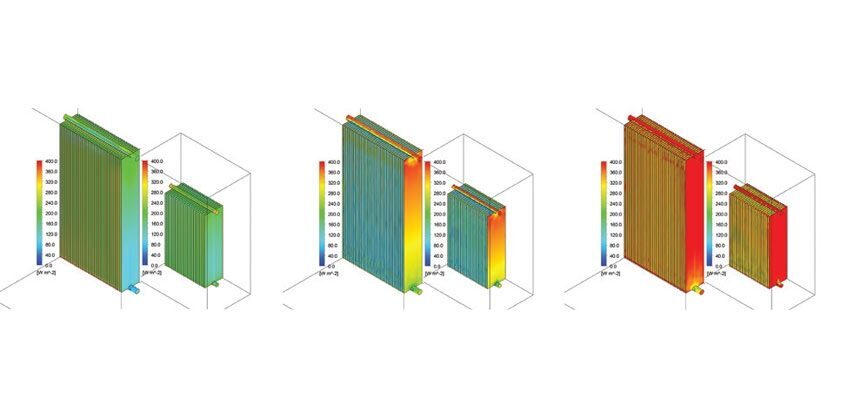
Radiator’s performance
Significance of radiation heat transfer on cooling performance of transformer radiator Abstract The article demonstrates significance of radiation heat transfer on cooling performance of radiators...
bySachin B. PARAMANE

Significance of radiation heat transfer on cooling performance of transformer radiator
Abstract
The article demonstrates significance of radiation heat transfer on cooling performance of radiators used in power transformers with air natural cooling configuration using analytical calculations and computational fluid dynamics simulations on two different case studies. Convective and radiative heat transfer mechanisms are modelled on a single radiator and a good agreement with the experimental measurement results is observed. The radiation contributes 21.3 % of total heat dissipation and thus has a significant impact on overall heat dissipation and cannot be neglected. This study will be useful – for the transformer designer – to point on the relevance of the radiative heat transfer in cooling.
Keywords: transformer, radiator, radiation, convective, heat transfer
- Introduction
Transformers are critical components in the electrical distribution network and in order to have continual operation of the transformer, its thermal management plays an important role. The losses generated inside the transformer are dissipated to the surrounding air by heat exchangers called radiators mounted next to the transformer. The heat from winding is transferred to the dielectric medium normally used as mineral oil and then the heat from the oil is transferred to the ambient air by convection in the oil, conduction from steel radiator fin, and, finally, convection and radiation from the fin to the air. Radiation heat transfer is often neglected in thermal design due to its complicated nature and misperceptions about its significance in cooling of transformer. In fact, radiation can be a major contributor in natural convection and low velocity applications. Thermal radiation refers to energy emitted by objects due to their temperatures. Unlike other means of heat transfer, radiation does not require a medium between cold and hot surfaces. Limited experimental and numerical work related to power transformer radiator cooling performance has been reported. Cha et al. described the numerical simulation for improving heat transfer in a power transformer, with the help of the thermal head (difference in elevation between the centre of the coils and the centre of the radiators). Nabati et al. carried out numerical modelling of temperature distribution and flow pattern in a block radiator for ONAN (Oil Natural Air Natural) cooling without considering the effect of radiation heat transfer.







